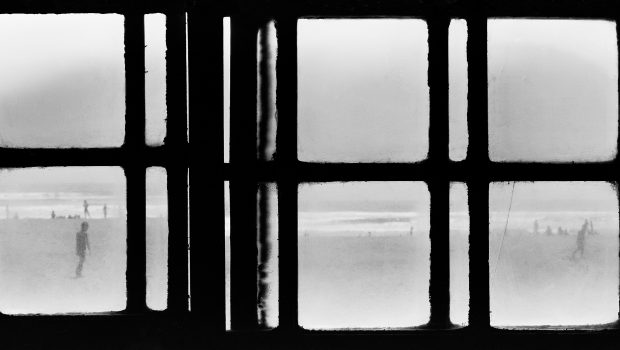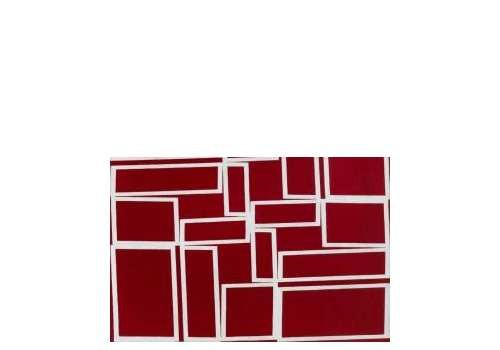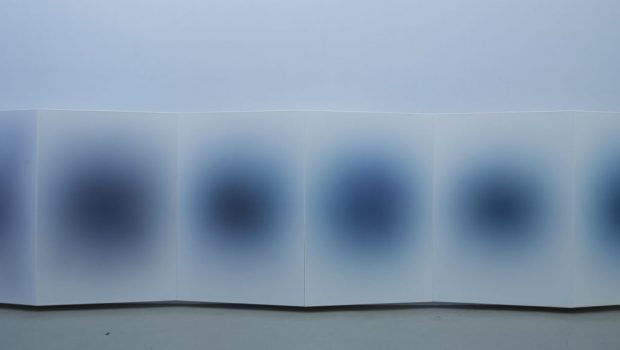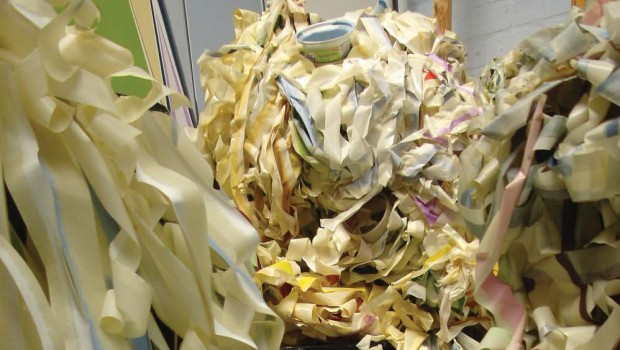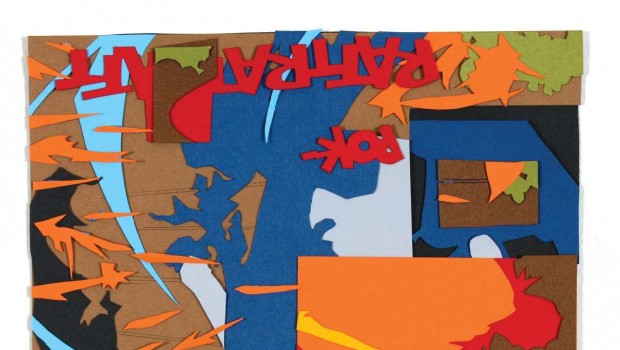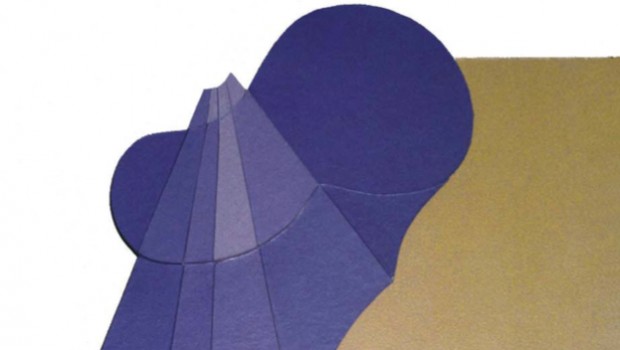Melanie Smith: The Absent Body
Tanya Huntington
Tanya Huntington: Let’s start with the theme of the expatriate. It’s always difficult when you position yourself outside of your native context, simply because the world of criticism and canonization has to do with passports. I think perhaps you belong to a generation where that is no longer so much of an issue, where globalization really has begun to work in your favor, but I wanted to ask what your experience has been. What brought you to extricate yourself from your context?
Melanie Smith: I don’t think it was ever really a decision. It was merely the fact that someone I knew at art college was friends with someone who really wanted to go to Mexico. And there were five or six of us who kind of went along like sheep, really. You have to put that in the context of the end of Thatcher, in ’89.
TH: Zero opportunities.
MS: Huge recession. In England at the time, there was no hope of being an artist. The people under whom I was studying, they were forty, fifty-year-olds who were just coming up to their second individual show, or something. It was just really tough. So, there’s why not? Why not be outside of Europe? It was pretty clear, at least for this guy, that he wanted to be outside of Europe. And when I got here, I realized why.
TH: You landed at a very interesting time. I think of the show up in Desierto de los leones, which changed the panorama of conceptual art. Was that part of this initial foray into Mexico?
MS: Well, that was Guillermo Santamarina, and yeah, I remember him telling me about it. That was in March of ’89, so that was really quick. I had only been here, a month? Two at the most. For me, it didn’t seem like anything radical, or anything new, it was just a sort of a following on my interests from art college. So I had no idea…
TH: …How important it was going to be later on.
MS: No, not at all! I remember, that was when I met Silvia Gruner, Gabriel [Orozco], Eugenio Vargas, and oh, Michael Tracy as well. Although I don’t think he was in the show. But anyway, for me it was familiar with works that had been shown in site-specific contexts and didn’t seem like anything particularly radical.
TH: Did you feel like something was altered? Site-specific does mean something, after all. What sort of transformation did your work undergo once you brought it to this new continent?
MS: Well, the show was around Joseph Beuys.
TH: Right, you were supposed to make an interpretation.
MS: Well, I guess in that sense, I’ve never been particularly keen on Beuys’ work, so it shaped things in a way that was not quite natural for me.
TH: Octavio Paz said wherever there’s tribute, there is also desecration. Do you ever feel like you are making art against something? I mean, there are those artists who are just sort of creating and building and trying to get at something, and then there are those who are trying to tear down a misconception, or an idea. Or do you play both sides?
MS: I’m very aware of the history of avant-garde. And the history of art. So sometimes I’m taking what other artists might have done here, and I’m continuing or putting on another sort of layer and maybe a critique at the same time, but I don’t know if it’s tearing down: it’s a reinterpretation, probably.
TH: Another turn of the screw.
MS: I’m really keen on Robert Smithson’s work, as are many artists, so that Spiral City was obviously a kind of play on his work and putting that into the context of Mexico City, and I think my work in Xilitla as well was rethinking a lot of his skewed, anti-anthropomorphic vision of the world.
TH: The delirium, also.
MS: Yes, and his work that he had done in Yucatán, in the steps of Catherwood and Stevens. I don’t think anybody can be totally in their own box, can they? I’m pretty much aware that I am somehow analyzing that European or American history of the avant-garde and bringing that to this context here.
TH: The way you strike up this conversation is very particular, you know, and your work is recognizable. It’s not as if it gets lost in the shuffle of the genealogy of art.
MS: No, I think it is quite particular. And I think you are very right also in bringing up this question of being a foreigner, because I think that my vision comes as being a subject living here, from that vision of European art bounced back here, so there’s always a sort of refracted vision of everything. And I think that it’s only quite recently, in the last two years, with these very particular places that I’m going to and doing works around, it’s almost like I’m trying to look for another place. I think that’s a very much a foreigner’s vision. Maybe in that sort of heterotopic sense, or maybe in the sense that it’s not this dystopian place, it’s just different. Which, I think is unconsciously because there’s always that push and pull of “where are you from” and “are you happy here” and “do you feel in place” and “do you feel out of place”.
TH: Those questions never stop asking themselves.
MS: And I feel in place, but I feel really out of place, and I think you just have to accept that feeling and go on. It’s part of a spark that makes you do things.
TH: I thrive on that. You don’t take things for granted. Does it work for you?
MS: I think in a work sense, definitely. I’m not sure, in a personal sense. Culturally, I still have this incredible nostalgia.
TH: Tell me if I’m way off base here, but it seems to me that could be because you really are your work, to a great extent. Perhaps that’s just part of what happens when your work is filtered through personal experience, vision, or identity to such an extent.
MS: Why am I here in Mexico? I’m here because it’s good for me to work. So it does become this whirlwind, everything becomes swept up in that centrifugal force, in a way. You’re really right.
TH: Among artists who get out there and explore, there are the collectors, heavily Duchamp or Beuys derived, who like to make cases with butterflies, so to speak. And then there are those who inherited from the 19th Century not the glass case, but more of the explorer’s impetus. I feel you’re more akin to that side.
MS: I need my studio. I need to come back to stuff. But I do like to go out there and find these specific places and I don’t know why, I have some magnet towards these impossible projects, and these impossible places.
TH: Is it perhaps that utopian impulse you were talking about?
MS: It’s constructing this, I don’t know if it’s a non-place, but it’s a different place. I’m trying to get my head around that one right now, and I don’t know where that comes from.
TH: But there is a searching.
MS: A searching for a place. I have to look for it now. And that’s just a naturalness of being somewhere or of having been somewhere for a long time. The projects are much more elaborated and they can take a while to develop.
TH: They’re almost like expeditions now, aren’t they?
MS: Yeah, yeah. And they take money, time.
TH: Logistics. So what happens if you put this together, you go to the Amazon, and you don’t find it. Or do you always find it?
MS: I think I make sure I find it. I guess that sort of chance element is not, because like I said, there is a lot of investigation in these things. But at the same time, I think maybe in terms of the image itself, it might not be exactly how you imagined it. And that’s part of it, that I’m not going with the script. I’m not saying, we need to shoot this, this, and this. There might be something along the way, something that happened, some precarious moment that becomes interesting.
TH: The sidetracks.
MS: But no, it didn’t cross my mind at all, that I wasn’t going to get what I wanted.
TH: I think that just speaks to your openness, versus projecting something onto the experience beforehand. You always get what you want if you go with the proper sort of open disposition to be affected by what happens.
MS: I had to be affected by what happens, definitely. Especially for Fordlandia, it was just one project that flowed from beginning to end. Incredibly well.
TH: Because you were vulnerable to it. Your art, it pulls the rug out from under me, right? It’s not this detached, cerebral, perception so often associated with conceptual art. There’s an increasing earnestness behind it now that I’m really enjoying, and I think it’s because you’re really laying yourself on the line.
MS: I think so, too. Of course I’m aware of theory and of course I’m aware of history of art, but I’m also, I don’t think any good art can come out of following those recipes. There has to be something else in there that breaks all these rules, that breaks things down, that is intuitive, that is maybe surreal or works where things work backwards, and I’m not afraid to do that anymore. I’m not afraid.
TH: Do you feel that’s a strange sort of return to mimesis? That you’re looking back at reality, could we venture to say?
MS: Yes.
TH: Tell me about what you’re doing right now.
MS: Right now, I’m at a bit of a block. Because I feel that Fordlandia was very strong, and very determined, and a big thing. But, I have a project in line, which I haven’t been able to realize right now. It’s there, it’s a project, it’s written, thought out, but it’s kind of a financial thing. And it’s a sort of sister project to Fordlandia. It’s this place called María Elena in the Atacama desert, in Chile, the oldest and only working salt mine in the world. So, I’m thinking a lot about…
TH: …how to get there.
MS: It’s just weird, by chance, it wasn’t something I was looking for this time, it was an invitation by a really lovely curator, and she told me, “There’s no money, but I want to start off this thing with you. Let’s start and then we’ll see how we get the money.” So, I went on a ten-day trip out there, and immediately started making all of these associations with Fordlandia. It’s one of those utopian projects. Not a city, it’s a settlement out in the middle of nowhere.
TH: They always are.
MS: It’s sort of the opposite of Fordlandia, it’s barren, it’s inhospitable, there’s this bright sun beating down. But the material itself, I think there could be something very sensuous and beautiful about it. You go there, and it looks like snow, the salt from the mines, it’s like those sort of drifts of whiteness. And then there’s also the beds where they make the salt. They’re beautiful. They look like paint palettes, so I am thinking immediately of doing something from the sky. I am thinking a lot of the body as well. The sort of strangeness of there being these bodies that live there. You know, they used to have kind of a token exchange instead of a monetary system.
TH: The company store. Not unlike the arts: the market increasingly encroaches on everything. Do you feel you are free to do what you like?
MS: In a way. I have more confidence now to know that even if you have to wait, it’s going to be worth it and the project will happen. I’m kind of in a funny place where I think I have some market value, but I know I don’t have an enormous market value. So, I think in a way that’s advantageous. Because, I don’t respond well if somebody tells me “I’ve got this, and you’ve got to do this project here.” If someone tells me to do something, it’s false, it’s construed. I don’t know, it just has to come out of something that I’m interested in. So, I think that kind of precariousness that I’ve built into my career in a sense, it’s not too bad, I’m kind of still the edge, I think.
TH: Do you think you can stay there?
MS: I think in the end, that’s the best for someone. Maybe it’s really old-fashioned, but I still believe in that idea that you have to be, not anonymous, but on the edge to be producing good stuff.
TH: We don’t have to get into sexual politics if you don’t want to, but sometimes I think women artists are generally not as consumed by this ambition of becoming a household name. And that’s advantageous when you’re trying to work.
MS: If you think about anybody in the art world, no one is going to be up there all the time. That’s how it has to be. That’s how it is. It’s a horrible, voracious thing about the art world. It’s like this, and then it’s like this.
TH: It’s difficult. It’s very demanding.
MS: To be years and years and years making: everybody has his ups and downs. Somehow and at some point, I don’t like it, sometimes I feel I would possibly like it to be a bit more comfortable, but then I wonder if this uncomfortableness, it goes back to the extranjera thing, is precisely what makes it OK, or precarious.
TH: “The Hunger Artist.”
MS: I don’t know, I mean, I’m not hungry, either. But, I think people who really are there and really are in the middle of it all, are they necessarily happy with what they’re doing, I wonder? Maybe they are, but very possibly they’re not, because there’s so much pressure on them.
TH: So much stress.
MS: Are you necessarily making your best and greatest things? Or are you conforming to just doing another project, the same old thing repeated in twenty different places?
TH: The self-parody. There’s the fleeting nature of that sort of attention, but what you just said also touches on the absurd positivism among critics. Nobody has any right to demand of any artist that every single work they produce be better somehow than the one that came before: it’s ridiculous. If you’re experimenting like you should be, then sometimes you’re going to hit it, and sometimes you’re not, or it’s going to be good in very different ways. Or on a very different scale, perhaps. So, I think that it’s wise of you to try and keep that at bay in order to conserve your freedom.
MS: I think it does give me more freedom. If you had asked me fifteen years ago, I probably wouldn’t have said the same thing. I would probably have been more ambitious about that sort of stuff. And still, I mean, I don’t have a gallery in New York: I would like to have a gallery in New York. But it’s not my “be-all” and “end-all”. My motivation is to be able to do the next project. To be able to get the money to do it and to be able to feel satisfaction and passion about what I’m doing. If you don’t have that… I think the point when I was selling most, I was most unsatisfied with what I was doing.
TH: And since your work does not carry a passport, then it does become hard to reconcile with the labels used by the market, don’t you think? Because there is not really an Englishness about what you’re doing, nor is there a particular mexicanidad. All those questions of identity…
MS: It’s curious, though. All those questions. They’re hard for me to answer. It goes back again to what you said, to how I am the work, so it’s hard for me to break away.
TH: To step outside of it. They’re all self-portraits, in a way.
MS: I think so. The funny thing is that again, it’s not that I would really know how other people are perceiving it, but I have the feeling that there are areas in my work that people have not touched on. Like you said, the self-portrait in my work: in a way, they all are. The body, for example, that sort of absent body. People always seem to get caught up in this urban, geopolitical reframing, certain modernist tropes. But I think there’s a lot more, and there’s a growing vortex in a sense of that the complexity of what I’m doing is getting bigger, somehow.
 Tanya Huntington is a contributing writer at Literal. Follow her on Twitter at @TanyaHuntington.
Tanya Huntington is a contributing writer at Literal. Follow her on Twitter at @TanyaHuntington.
Posted: August 25, 2014 at 10:15 pm




